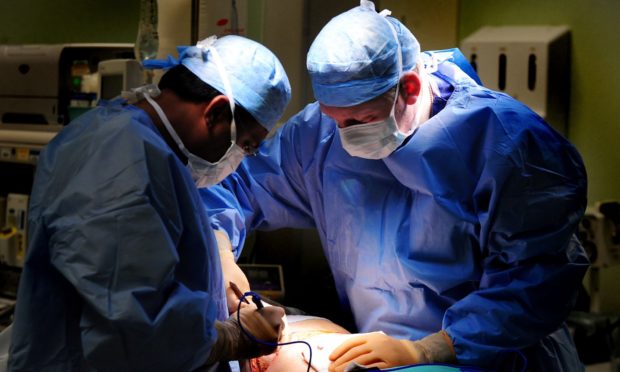NHS Grampian recorded more patient-harming blunders than any other health board in Scotland last year.
A total of 87 incidents met the threshold for a “duty of candour” investigation at the north-east board in 2019/20, up from 60 in the year before.
Under a 2018 law, boards are required to demonstrate that they have learned lessons from an adverse event that has resulted in the harm or death of a patient, as well as offering an apology to the families involved and publishing a report each year.
Known as “duty of candour”, the regulations were brought in to improve transparency following controversies over attempts by some health boards to hide their failings.
After Grampian, the NHS board with the next-highest number of incidents last year was Ayrshire and Arran, with 73, followed by Greater Glasgow and Clyde, with 49, and Dumfries and Galloway, with 34.
NHS Tayside reported 30, double the 15 it had recorded in the previous year, while there was a rise from 16 to 23 at NHS Highland last year.
Elsewhere, there were 28 of the probes at Fife, 23 at Lothian, 20 in Lanarkshire, 15 at Borders, six at Forth Valley, two in Orkney, and one each at Shetland and Western Isles.
Labour MSP Lewis Macdonald said the variation in the figures suggested there is a lack of consistency in the way health boards have been reporting such adverse events.
Figures ‘deeply worrying’
Meanwhile, all mainland NHS boards admitted in their annual reports that the blunders they recorded included deaths, except for Grampian and Tayside, which did not publish a breakdown, despite criticism last year over the lack of transparency.
David Duguid, Scottish Conservative MP for Banff and Buchan, said: “Our NHS is under huge pressure but it is important and welcome to have these procedures in place so that lessons can be learned from any mistakes that are made.
“These figures will be deeply worrying for people in the NHS Grampian health board area.
“I think the public also would expect a greater degree of transparency. If most other health boards can publish data on the number of cases that resulted in death, then I am not sure why the same cannot happen here.
“Every one of these incidents should be investigated fully, with the findings published and improvements made where necessary.
“And it is up to SNP ministers to ensure that the duty of candour policy is working as it was intended.”
Board ‘has tried to learn’
A Scottish Government review of the legislation earlier this year found that there was “confusion” at some boards about what should be included in the annual reports, with a series of recommendations also made to tighten up the procedures.
Duty of candour report data for last year cover the period from April 1 2019 to March 31 2020, and therefore only includes the first few weeks of the coronavirus pandemic.
The NHS Grampian annual report shows that it was able to notify the person concerned, or their relatives, in 80% of cases.
However, it only managed to complete its investigation within the 90-day limit set out in law in 40% of them.
“In every case, we reviewed what happened to try and learn for the future,” the report states.
“We have tried to learn not only from every adverse event we reviewed but also from reviewing our processes and our decision-making.”
NHS Grampian declined to comment beyond what was in its report.
‘Still no consistency’
Changes introduced at the board as a result of the duty of candour investigations included a review of policies “around locked doors in areas where patients may be unsupervised”.
There was also a reassessment of “how we assess patients who may need thromboembolic prophylaxis (to help prevent blood clots) in certain clinical areas”.
Other improvements included the introduction of a formal process of “criteria-led discharge for day case patients”, a standardised approach to the documentation and communication of instructions after surgery, a policy for the insertion and management for central venous access devices, and a policy for the identification of faulty equipment and returning items to manufacturer for assessment.
Mr Macdonald, a north-east MSP who is also convener of the Scottish Parliament’s health committee, questioned the wide variations in the data between boards.
“What’s most striking about these figures is that there is still no consistency in the way health boards report adverse incidents,” he said.
“When boards report as many adverse incidents in Grampian as in Tayside, Fife and Lothian put together, it’s quite clear boards are not comparing like with like.”
He added: “The Scottish Government promised last year to sort this out, so that all health boards reported to the same standard, but that has clearly not happened yet.
“Ministers need to be clear with all health boards what cases should be counted, and what information should be published, so that the figures from across Scotland are actually useful to patients and their families.”
Duty of candour
A Scottish Government spokesperson said: “All health and social care bodies have a statutory responsibility to be open and transparent when an unintended or unexpected incident results in death or harm.
“This duty of candour means that health and social care bodies must investigate and report on the causes of harm and learn from those lessons in every case.
“We continue to work with NHS boards to update the organisational duty of candour guidance, taking into account lessons learned from the first two years the regulations have been in force.”



